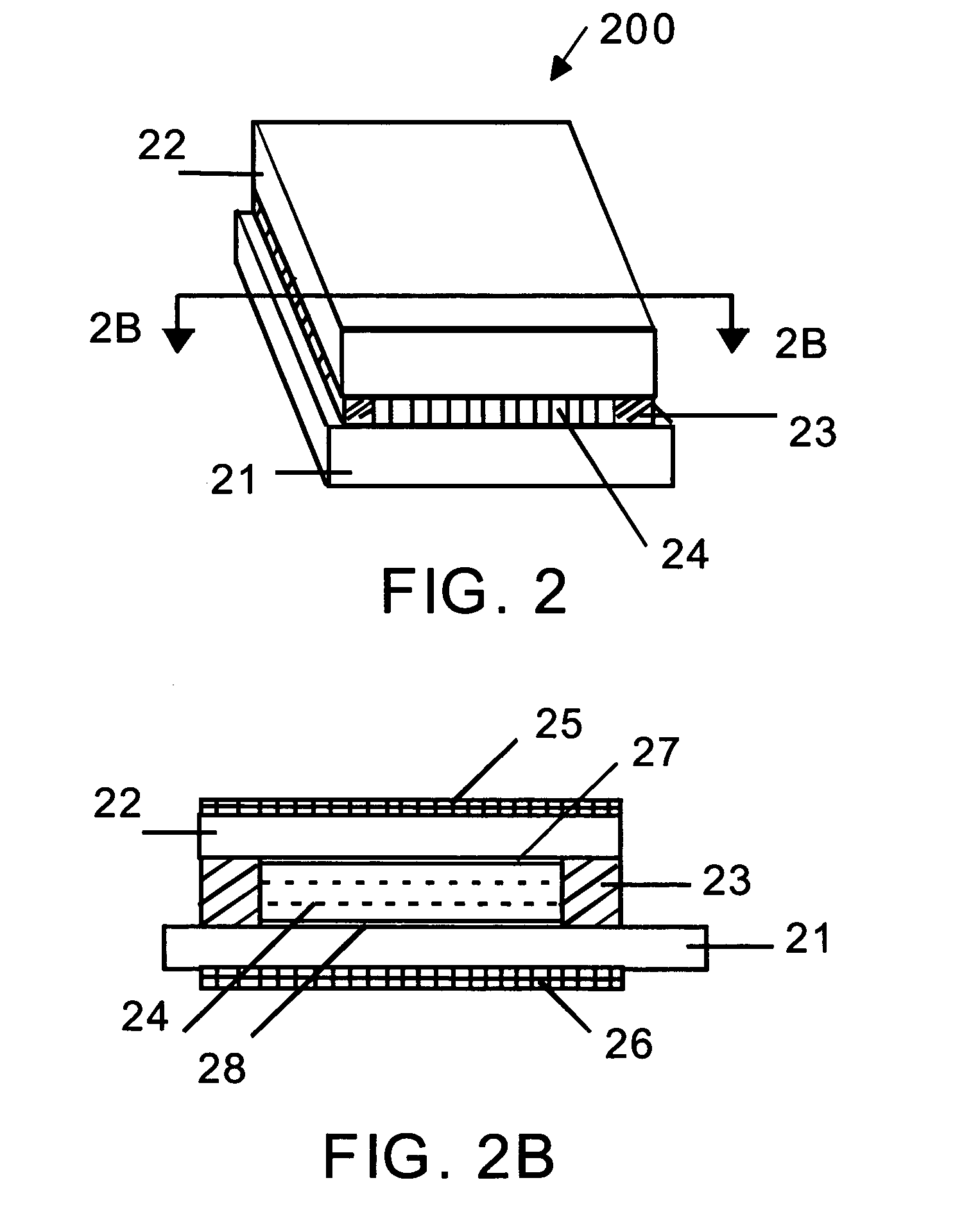Organic light emitting diode backlight integrated LCD
a light-emitting diode backlight and organic technology, applied in non-linear optics, instruments, optics, etc., can solve the problems of inconvenient use, large moisture content, and appearance of fringes and rings, and achieve the effects of less moisture, enhanced oled life, and more durabl
- Summary
- Abstract
- Description
- Claims
- Application Information
AI Technical Summary
Benefits of technology
Problems solved by technology
Method used
Image
Examples
Embodiment Construction
[0030]FIG. 1 shows the isometric view of an OLED backlight device 100. An organic multi-layer stack 4 is enclosed between top glass substrate 2 and bottom glass substrate 1, more precisely cover glass. The thickness of the organic layer is denoted by t and is around 125 nm to 200 nm. The stack 4 is sealed all around by a perimeter seal 3, which is hermetic to prevent moisture and Oxygen entering the device. When a voltage of 5V is applied across the stack 4, through the reflective cathode 5 and the transparent anode, not shown in FIG. 1, the organic stack emits visible light 6. Also not shown in FIG. 1 is a gap between cathode 5 and bottom substrate 1. FIG. 1B is the cross section taken from FIG. 1. The OLED stack, enclosed between the top glass substrate 2 and bottom substrate 1 and sealed at the perimeter by the seal 3, contains a cathode 5 and an anode 7 that inject electrons and holes respectively to the organic stack 4. The anode 7 is usually of Indium Tin Oxide (ITO). It can b...
PUM
 Login to View More
Login to View More Abstract
Description
Claims
Application Information
 Login to View More
Login to View More - R&D
- Intellectual Property
- Life Sciences
- Materials
- Tech Scout
- Unparalleled Data Quality
- Higher Quality Content
- 60% Fewer Hallucinations
Browse by: Latest US Patents, China's latest patents, Technical Efficacy Thesaurus, Application Domain, Technology Topic, Popular Technical Reports.
© 2025 PatSnap. All rights reserved.Legal|Privacy policy|Modern Slavery Act Transparency Statement|Sitemap|About US| Contact US: help@patsnap.com



